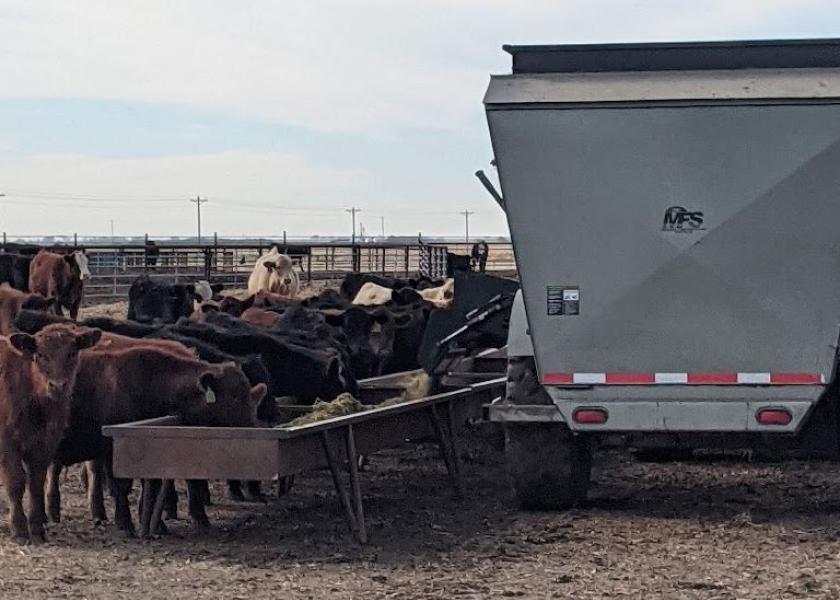Could BRD Cases Decline In High-Risk Cattle With Delayed Vaccination?

While vaccination is widely considered a critical component of cattle health management, could the timing of vaccination impact the efficiency of the product?
A study by the West Texas A&M University Department of Agricultural Sciences and the USDA Agriculture Research Service Livestock Issues Unit in Lubbock, Texas shows there may be more effective vaccination protocols for stressed, high-risk calves arriving to a backgrounding or feedlot operation.
While bovine respiratory disease (BRD) remains the costliest disease in the U.S. cattle industry, modified-live virus (MLV) vaccination against respiratory pathogens in cattle on feedlot arrival has been unanimously recommended by consulting veterinarians. However, there is surprisingly limited, but emerging literature, describing the efficiency and safety of vaccination in different cattle production environments, including delayed administration of MLV vaccines in stressed, high-risk cattle, says the study report published online in the National Library of Medicine.
According to the USDA Center for Veterinary Medicine (CVM), the USDA approval process does not require examining the safety of vaccination in highly-stressed, immunosuppressed cattle. Additionally, products are labeled to “be effective for the vaccination of healthy cattle” and not necessarily proven to “work” on cattle under physiologic stress.
Cattle during different times of their life experience stress: birth, branding, weaning, marketing and relocation. However, it’s important to understand how acute or short-term stress differs from chronic or long-term stress.
At the cow-calf phase, calves experience acute stress at birth, branding and weaning, which may actually result in priming of the immune system and contribute to an enhanced vaccine response—allowing sufficient time for vaccinates to develop immunologic protection before natural challenges with BRD-causative agents occur, the report explains.
Similarly, the pre-conditioning phase, when calves are vaccinated and retained on the operation after weaning, the report explains how these calves exhibit less morbidity and health costs at the feedlot while typically generating greater net return to the cow-calf producers as calf value increases. However, only 39% of all beef operations vaccinate calves against respiratory disease before sale, the report states.
When calves reach the stocker phase, many beef calves are immunologically naïve and stressed. Producers should consider vaccine safety and the potential for inadvertent antigenic enhancement of MLV vaccines when administered to newly received stocker calves.
“Because subsequent disease challenge in the feedlot phase is probable, stocker calves should be administered vaccines with adequate time for immunization to occur before feedlot shipment. However, stocker producers should consider delaying MLV vaccination for 14 to 30 days after arrival, as improved health and performance outcomes have been reported in high-risk stocker calves using this strategy,” the report explains.
While the adoption rate of respiratory vaccination in the feedlot phase is nearly 100%, the report suggests further research is needed to understand the efficiency of vaccination and if a delayed MLV vaccination may improve health outcomes in auction-derived feedlot cattle.
In a study with 528 high-risk stocker calves, a delayed (Day 14) MLV administration procedure was evaluated against the traditional on-arrival (Day 0). Results showed calves receiving delayed vaccination had improved performance and numerically less BRD-associated morbidity, relapse and mortality.
Another study of 5,179 auction-derived heifers observed a decrease in the number of heifers treated twice for BRD and numerically less morbidity, mortality and case fatality rate for those receiving their initial MLV at 30 days after the feedlot arrival compared with on-arrival, the results explain.
While delayed vaccination shows promising results in initial studies, the report explains the challenge remains in accessing current literature explaining the benefits, or lack thereof, of vaccinating cattle immediately on feedlot arrival.
As cattle vary in immune status, age, breed, and marketing channels used, as well as addressing the complex nature of BRD, the “best” vaccination protocols likely remain a challenge to define.
While it’s widely accepted that vaccines provide immunologic protection against economically important cattle diseases, the report cautions that vaccine efficiency may not be realized if the timing of vaccination is inappropriate, cattle are immunosuppressed at the time of vaccination, and/or if the infectious challenge is greater than the immunologic protection by the vaccination. Emerging research studies and literature may help provide more insight for producers in the coming years.







